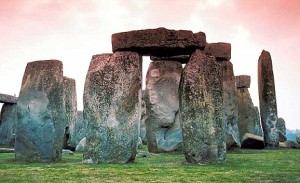
The Brits came from Armenia and settled down in the south of Britain.” Another theory considers that Armenians were the first people to inhabit the Irish Isles. The proof of it is the Armenian-Celtic cultural similarity, the same Stonehenge in Ireland. Moreover, during the liturgy ceremony the Irish priests always pray for the wellbeing of the Armenian Nation. The English historian Metyu Perris states that a group of the Armenian churchmen went to
England during the Mongolian Tatar invasion in 1250, among them being a bishop from the Irish Church Sill Rashid in which we can also see similarities of the Armenian architecture.
Friendly relations between England and Armenia increased in middle Ages, as merchants from Armenian societies living in British colony used to bring a number of eastern goods to England. By the Royal English Manifesto the best merchants were awarded a special status of “free citizens’ of England”. The great flow of invasion began in the 18th century. In 1835 the Armenian traders from Constantinople created an Armenian society in Manchester. In 1870 the first Armenian Church of Trinity was opened in England. The Armenians living in India migrated to England in the 19th century. Among them were many popular names: Charles Hamilton Ayden (Aytnyan) the author of many novels depicting noble life of the English people, Zapel Poyachyan – writer, painter and translator of the “Armenian Legends and poems”.
Arshak and Aram Raffi, sons of the greatest Armenian novelist Raffi became the founder of the “Union of the Armenian Businessman or the “Armenian Students in London” in 1898. The organization later turned to be a symbol of unanimity for 400 Armenians living in the UK. Soon the union took the initiative of publishing a newspaper “Ararat” in English. One of the employees of the editorial was fiction writer Michael Arlen (Tigran Gouyoumjian). His novel “Green Hat” had a great popularity in Europe in 1924. The migration of Armenians went on at the beginning of the 20th century. In result, they built many institutions, cultural centers and churches. Worth mentioning is the part of London Underground – “Victoria” designed by the Armenian architect Haro Bedelian. He also designed the station near Oxford Circle, “Eurotunnel”, (50 km length).
Nowadays more than eighteen thousand Armenians live in the UK. You can find many Armenian organizations, among them being the branch of the Armenian General Benevolent Union, Council of the Armenian Society, the Armenian Institute, “Hayashen” information center and etc.










